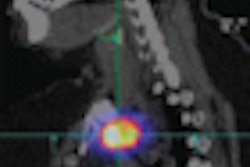By using 2D/3D SPECT/CT, Swiss researchers have detected a drug bound to insulinoma cells, indicating the precise location of life-threatening pancreatic tumors as small as about 1 mm in diameter.
The study from the University Hospital of Bern concluded that images obtained from SPECT/CT could help patients with their surgery, which is the only way to cure the disease.
Dr. Emanuel Christ, a clinical researcher in the department of endocrinology, presented the findings on 7 May at the joint International Congress of Endocrinology/European Congress of Endocrinology (ICE/ECE) in Florence, Italy. Christ and his colleagues found that the pancreatic tumors, known as insulinomas, had high densities of a particular type of receptor on their cell surfaces that could be targeted with the radiolabeled drug 111In-exendin-4.
Researchers injected the drug into 18 men and 12 women, then scanned them after 30 minutes, four hours, 23 hours, and 96 hours, and up to 168 hours after injection. Conventional MRI, CT, and endosonography detected the tumors in 17 patients, while SPECT with 111In-exendin-4 correctly detected 23 benign insulinomas, one malignant insulinoma, two groups of proliferating cells, and two uncharacterized lesions. Positive predictive value was 85%, while the negative predictive value was 100%. After the scans, the tumors were removed surgically and the diagnosis confirmed when pathologists examined the tissues.



















